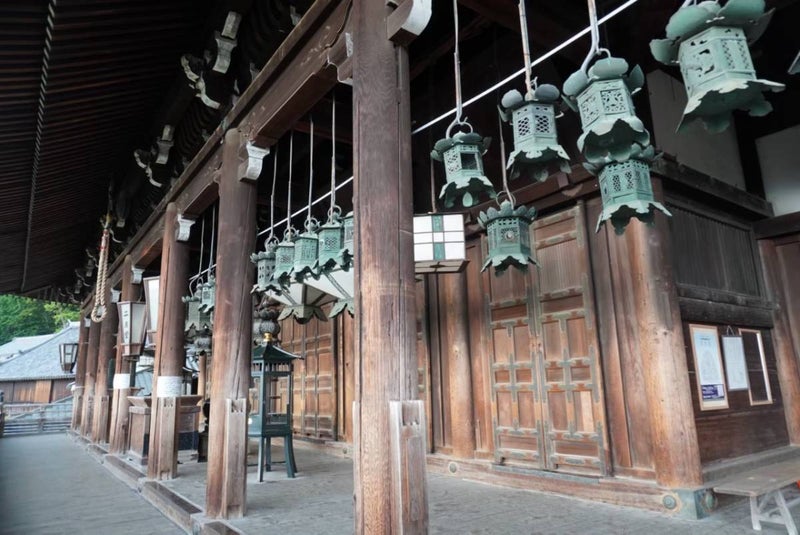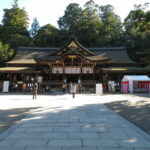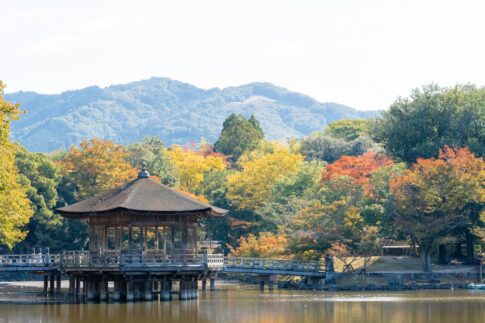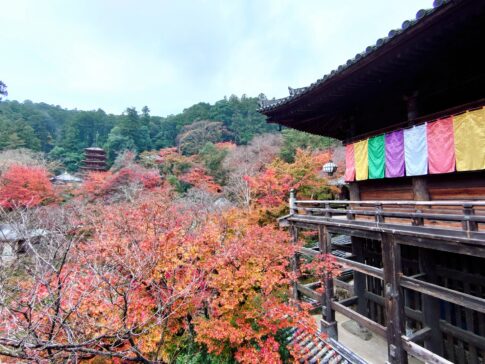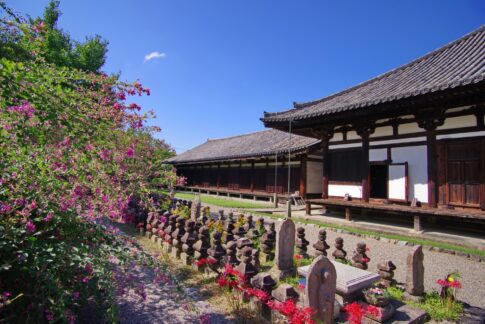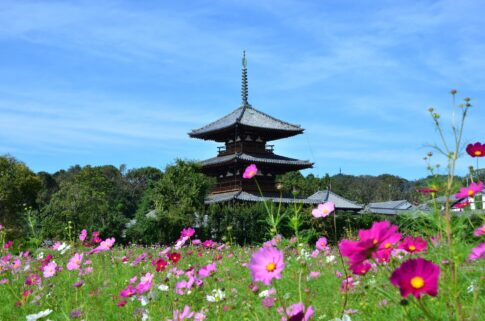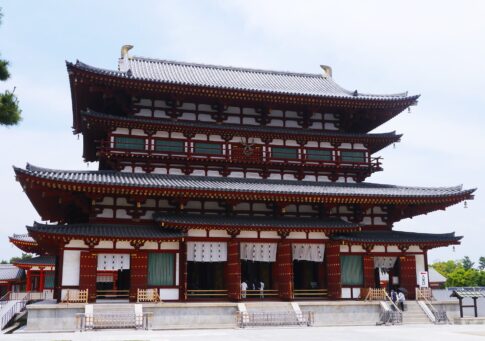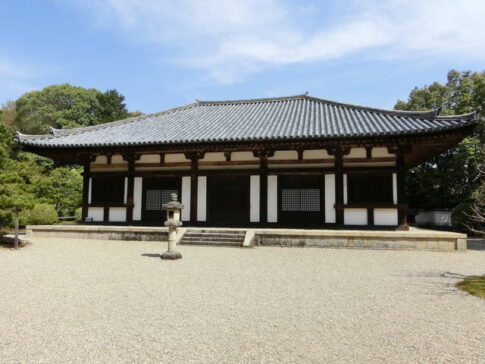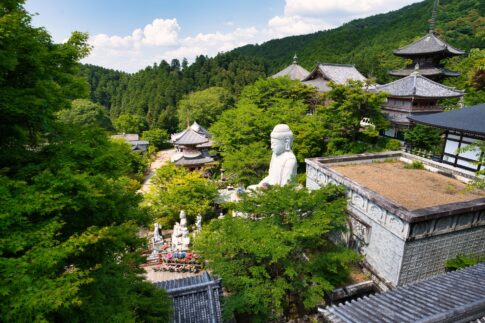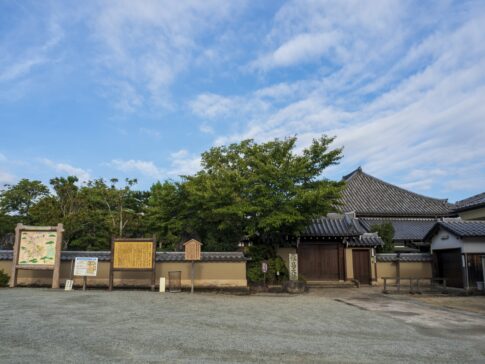Nigatsudo is a Buddhist temple on the ground of Todaiji Temple.
If you travel Nara, we recommend to visiting both Todaiji Temple and Nigatsudo.
What you need to know before visiting Nigatsudo
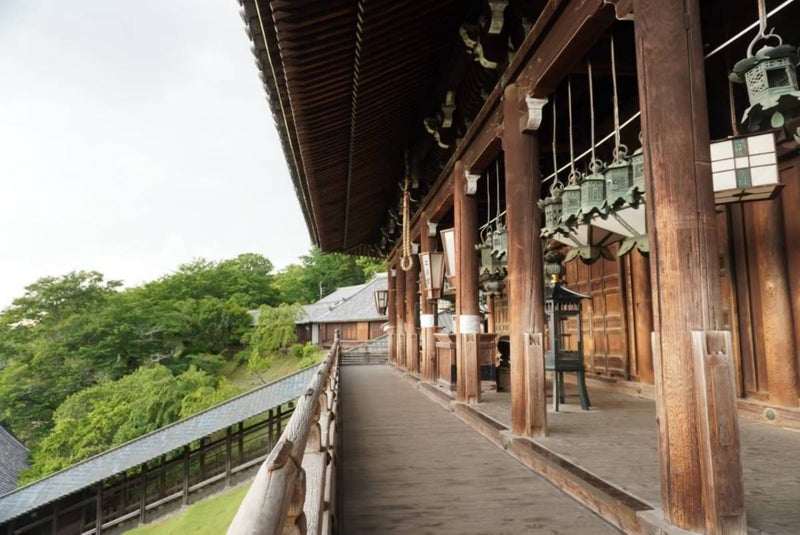
1. Basic Information
The name “Nigatsudo” comes from the fact that Shuni-e (a ceremony held during the second month of the lunar calendar) is held in this hall.
It is said to have been built by Jicchu, a senior disciple of priest Ryoben, but it was destroyed by fire during the Shuni-kai in 1667, and the present building was rebuilt two years later.
The present building was rebuilt two years later. The original building seems to have been small in scale, and was enlarged over time to accommodate the Shunikai rituals.
The acoustics and the layout of the inner sanctuary, outer sanctuary, and courtesy hall make it a truly appropriate building for performing the Gyobo.
Nigatsudo is located on a hillside to the east of the Kondo (Great Buddha Hall) of Todaiji Temple, and is dedicated to the eleven-faced Kannon (Goddess of Mercy).
Immediately to the south is Hokkedo, commonly known as Sangatsudo.
The area where these halls are located is called “Sen-in,” and was the site of the predecessor temple of Todai-ji Temple, which existed prior to the opening of the Daibutsu statue.
Todaiji lost most of its original buildings in a military fire caused by Taira Shigehira in 1180 and in a war between Miyoshi and Matsunaga in 1567.
Nigatsudo survived these military fires [1], but was destroyed by fire on February 13, 1667, close to the full completion of Shunikai.
The present Nigatsudo was rebuilt in 1669 with the assistance of the Edo shogunate, following the scale and style of the previous building.
2. History of Nigatsudo
Shuni-e is said to have been held for the first time in 752, the same year as the opening ceremony of the Great Buddha, and Nigatsudo is said to have been built at that time.
However, there is no mention of the building’s construction in historical documents of the same period, so it is not known for certain.
The area around Nigatsudo and Hokke-do to the south was the site of temples such as Fukuju-ji and Kinsho-ji, predecessors of Todai-ji, before the opening of the Great Buddha.
Excavations conducted in conjunction with the dismantling and repair of the Busshonoya in front of Nigatsudo have revealed remains of the predecessor temple and tiles from the first half of the 8th century.
According to the temple’s legend, such as “Nigatsudo Engi Emaki” (Engi Picture Scroll of Nigatsudo, dated 1545), the beginning of the Shunikai was as follows. In the 3rd year of Tempyo Shoho (751), Sanetada entered a dragon pit in Kasagi (present-day Kasagi Town, southern Kyoto Prefecture), which led to the inner sanctuary of Tozoten (Kabutoten), where heavenly deities were performing the Keka (repentance) ritual centering on the living eleven-faced Kannon (Kannon in eleven-faced form).
As the character “keka” suggests, repentance is the act of repenting to the Kannon for one’s own faults. Sanetada wished to bring this practice back to the human world, but he was told that to do so, he would have to worship the eleven-faced Kannon in the flesh. After returning to the lower world, Sanetada made offerings of incense and flowers from the beach at Naniwazu to Mt. After about 100 days, the living eleven-faced Kannon came to him from the sea. The Kannon that Sanetada saw was a 7″ statue made of copper, and was as warm as human skin.
The above is a legend, but Sanetada is an actual monk, although his origins and other details are unknown.
In the “Todaiji Gonbetsudo Sanetada 29 Articles,” which is cited in the “Todaiji Yoroku,” Sanetada himself wrote, “For 70 years from Tenpyo Shoho 4 to Daido 4, he performed the 11-men repentance for 27 days (14 days) from February 1 every year,” which is one of the reasons why the origin of Shunikai was dated Tenpyo Shoho 4. This is one of the reasons why the Shunikai was founded in the 4th year of Tenpyo Shoho.
However, “Tenpyo Shoho 4 to Daido 4” is 58 years, not 70 years.
3. What Shuni-e is
In order to understand the unique characteristics of Nigatsudo, it is essential to understand its relationship to Shunigai.
Shuni-e at Todai-ji Temple is an extremely complex and varied event, and only a very rough outline is given here.
Shuni-e is an event held for 27 days (Nichi-nichi, meaning 14 days) in February of the lunar calendar. It is an eleven-faced repentance ceremony to repent for one’s faults to the eleven-faced Kannon, the principal deity of Nigatsudo, and to pray for national stability and prosperity and the happiness of all people.
Currently, the ceremony is held from March 1 to 14 of the new calendar year.
The Buddhist memorial service is performed by 11 specially selected monks called “rengyoshu.
The main part of the event is the “Rokujoki no Gyobo” held in the inner sanctuary.
This means that the six “six-o’clock” rituals are performed during the day: midday, sunset, first night, half-night, second night, and first day of the month (Jinjo).
In addition to the daily rituals mentioned above, various other rituals are woven into the event. The most prominent of these are the Datta, performed from March 12 to 14, and the Mizutori, performed late at night on March 12 (or early morning on March 13, to be exact).
In the Tadanda, parade performers wearing exotic hats and dressed as “Hattens” run out to the front of the inner sanctuary one after another, ringing bells and tin cans, wielding large swords, and scattering haze (roasted glutinous rice).
The climax of the ceremony is the torchlight blessing, in which the torches are thrown down toward the hall of worship, scattering sparks of fire.
The origin and meaning of the word “datan” are unknown, and the practice is shrouded in mystery.
Summary
Nigatsudo is important building not just as traditional place but also as religious place.
You can feel the exotic atmosphere there!
